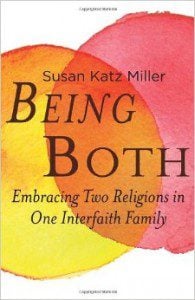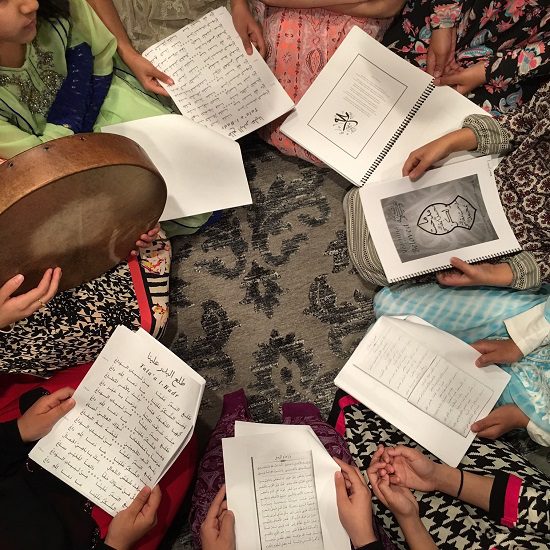Are you a Muslim man with a non-Muslim wife? Or perhaps you are that rarer breed of Muslim woman who has broken with tradition and married a non-Muslim? Are you the child of an interfaith marriage? Regardless of theological implications, you may be having a difficult time managing an interfaith relationship while being Muslim.
Research shows that one in five American Muslims marry someone of another faith, and that these marriages may be instrumental in assimilating Muslims into American culture. But often Muslims in these relationships feel conflicted when it comes time to raise their children in a particular faith, both faiths or none at all. Since resources for Islamic interfaith marriages are practically nonexistent, it may be helpful for the men and women in question to utilize information meant essentially for other interfaith groups. These Muslims can look to how their brothers and sisters in the Christian and Jewish traditions are managing and sustaining interfaith relationships and raising interfaith children.
One recently resource is the book Being Both: Embracing Two Religions in One Interfaith Family by Susan Katz Miller, published by Beacon Press. Although mainly aimed at the experiences and challenges faced by Christian and Jewish couples, the book offers several key points that are easily transferable and equally valuable for a Muslim man or woman married to a non-Muslim spouse. It is easy to read, completely devoid of judgment and refuses to pick sides. With an academic rigor, Miller uses surveys and interviews of not only the couples, but also their children, to find out what makes dual-faith marriages successful and how best to raise children without sacrificing the faith traditions of either parent.
Being a child of interfaith parents herself, Miller is very open to the idea of raising children with multiple sets of faith identities and allowing them the comfort and trust to choose the best route. At the same time she acknowledges that doing so is not for everyone, and each couple must decide based on their own unique circumstances and family structures.
Millers’ own experiences in the beginning of the book set the tone, describing a childhood and teenage of unacceptance by either religious side – a phenomenon she calls cognitive dissonance due to an amalgamation of race, culture and religion (page 9). Interestingly, it is when she spends time as a young bride among Muslims in Senegal, West Africa that she truly finds her connection to Judaism. She says, “Our experience with Islam in Africa broadened my thinking beyond the ‘Christian or Jewish’ duality that dominated my childhood. I began to understand the three Abrahamic religions as variations on a monotheistic theme (pages 14-15).”
Back in the United States as a new mother, she finds a priceless resource in the form of the Interfaith Families Project, where children could be raised as followers of both faiths instead of just one. In short, they could honor and respect the traditions and learn the rituals of both parents rather than have to make a choice of which one to follow.
Being Both goes on to describe in detail not only the Interfaith Families Project but also other similar organizations created for the specific purpose of providing an open and respectful environment to couples and their children. Using data interspersed with quotes and stories, Miller shows the very human struggles and challenges of these dual faith families and how they cope in an exceptional manner by refusing to be exclusively committed to only one faith.
Theologically, this approach may not be sound for Muslims. After all, Judaism and Christianity have a shared history and religious background that makes it easier for them to accept each other, whereas Islam is set apart in many ways in terms of beliefs as well as rituals. Yet the number of Muslims who are marrying spouses of other faiths seems to be growing. Although the raising of children can be a sticky issue, and one which many prefer not to discuss in public, Being Both is an available resource should one need help.
It contains Miller’s understanding of the benefits of dual-faith life, such as promoting transparency, encouraging family unity, giving importance to all family members equally, promoting cultural harmony and providing education in both religions instead of one or none. It also delineates several common objections society has to offer to a married couple attempting to be dual-faith or interfaith and how to best respond to these objections.
These objections take the form of myths such as ‘the children will be confused’ or ‘the child will feel obligated to choose one parent over the other or even that ‘the interfaith marriage is doomed to failure.’ Miller uses surveys and other data to destroy some of these myths and provide honest answers from real-life experiences. Again, the information is geared mainly towards Christians and Jews but the lessons to be learned are similar across all religious faiths, and Muslims who have no other resource can gain something from it.
The final part of Being Both addresses the newest wave of interfaith families, that of Muslims, Hindus and Buddhists. Quoting from Pew Research polls that show 62% of American Muslims thinking it okay for Muslims and non-Muslims to intermarry, Miller explains that “each religious combination creates unique challenges and unique synergies (page 204).” Interviews with some Muslim clergy further describe what those challenges and synergies might be, as does the case study of arguably one of the most famous Muslim American interfaith couple – scholar and author Reza Aslan and his wife Jessica Jackley.
Finally, whether one reads this book or not is as much a personal decision as any. The fact remains that interfaith marriage is not for everyone, and raising children with two religions is even more taboo, whether Muslim or not. But the reality on the ground in America today shows that more conversations and resources are needed for those who decide to take this route.
Miller’s position is obvious; she feels that offering a respectful and interfaith upbringing to children is more than just for the family itself; in fact she believes that dual-faith children can be ambassadors of peace. She says: “as interfaith children, born with the potential to walk in more than one pair of religious shoes or to see trough mote than one religious lens, we have a unique role to play in reducing religious intolerance and promoting religious peace. By our very existence, strong interfaith families disarm those who believe there is only one true way to live a righteous life. By our very presence in the world, interfaith children make coexistence into a permanent reality (page 224).”
It remains to be seen whether Being Both will be the impetus for other authors from other faith traditions, including Islam, to do their own research and write about this relevant topic. In the meantime, Miller can be the primary go-to resource with some very pertinent and helpful information as we navigate new identities and realities as American Muslims.
Saadia Faruqi is the editor of the Interfaith Houston blog and author of upcoming short story collection “Brick Walls: Tales of Hope and Courage from Pakistan”. She has written on American Muslim issues in a variety of publications including Tikkun Daily, Religion Dispatches and the Islamic Monthly. She is currently engaged in research on representations of Muslim women in American print media. Follow her on Twitter @saadiafaruqi.












